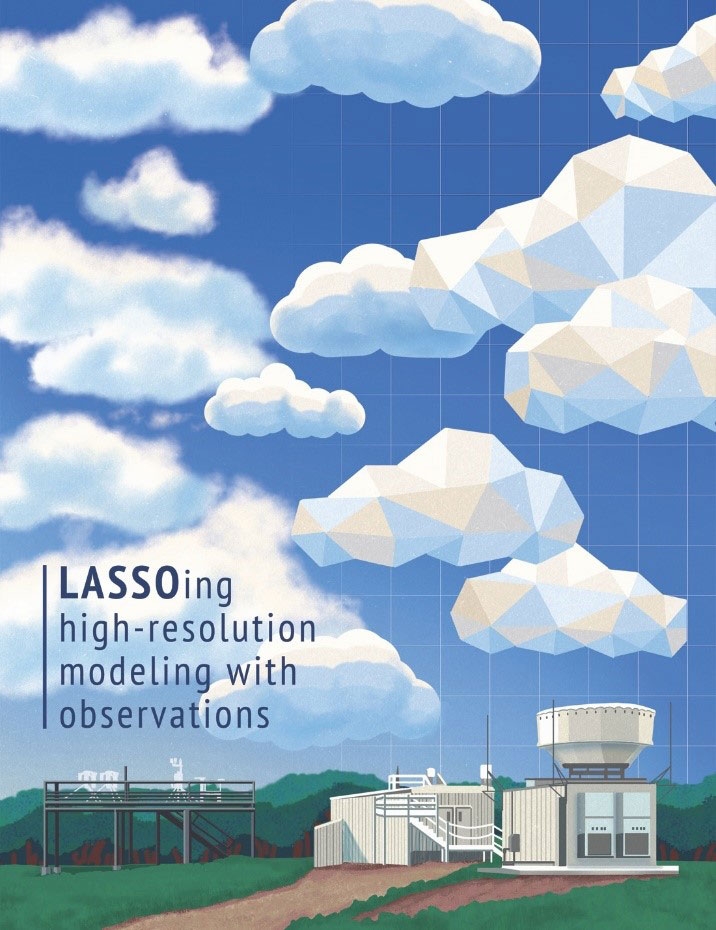The Science
Combining large-scale atmospheric models and observations is a long-standing challenge for scientists. One reason is the mismatch between different space and time scales. For example, shallow convective clouds—low, puffy clouds that reflect sunlight back to space—are so small that typical atmospheric models cannot represent individual clouds. The Department of Energy’s Large-Eddy Simulation (LES) Atmospheric Radiation Measurement (ARM) Symbiotic Simulation and Observation (LASSO) activity seeks to bridge these scale gaps. To get a more detailed look at the atmosphere around an ARM observatory, LASSO packages LES modeling with real-world observations. In a new foundational paper, researchers describe the first scenario of focus for LASSO. The scenario involves shallow convection at ARM’s Southern Great Plains atmospheric observatory in Oklahoma.
The Impact
LES uses fine-scale models to resolve details of most of the turbulent mixing air near the Earth’s surface. Compared with other long-term LES simulations, LASSO is unique in that it uses an LES ensemble for each simulated day with shallow convection. This helps account for uncertainty in the model input data for the simulation as it models the atmosphere through time. This LES ensemble is packaged into data bundles that combine model input and output data, observations, and evaluation data that show how the LES results compare with the actual observed atmosphere. These bundles make it easier for scientists to interact with and choose the LES simulations for their research. The number of scientists using LASSO is increasing as more simulations and data bundles become available. So far, scientists have used LASSO to improve our understanding of shallow clouds, cloud representations in models, and radar observation methods.
Summary
Shallow convective clouds are critical to atmospheric radiation and the Earth’s energy balance, and they are important for solar forecasting at the Earth’s surface for applications such as solar power farms. However, these clouds cannot be resolved even in the highest-resolution operational weather forecast models, let alone in climate models that must accurately handle the Earth system’s radiative balance. LASSO seeks to contribute to this and other active areas of research.
This recent paper introduces LASSO and describes its audience, core concepts, LES production for shallow convection, available data, and general LES behavior. As of April 2020, LASSO data bundles are available for 78 case dates from 2015–2018 at ARM’s Southern Great Plains atmospheric observatory. The Southern Great Plains is one of the most heavily instrumented long-term observatories in the world. Processing of data bundles is underway for the 2019 shallow-convection season (spring/summer). The paper also touches on LASSO’s future, including a new deep convection scenario using data from ARM’s Cloud, Aerosol, and Complex Terrain Interactions (CACTI) field campaign in Argentina. CACTI took place from October 2018 through April 2019 in Argentina.
Funding
Funding has been provided by the U.S. Department of Energy (DOE) Office of Science, Office of Biological and Environmental Research, via the Atmospheric Radiation Measurement facility, a DOE Office of Science user facility.
